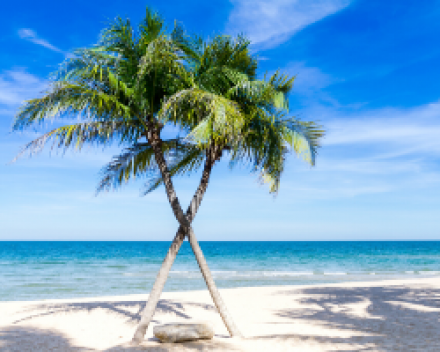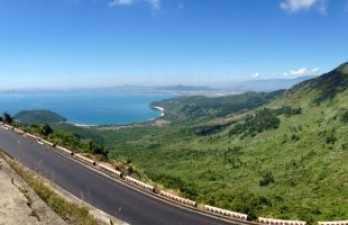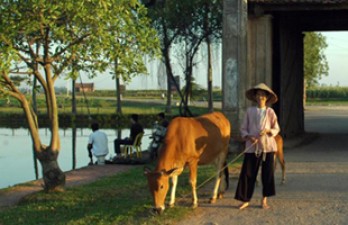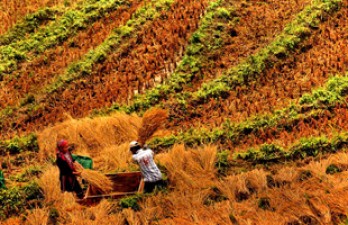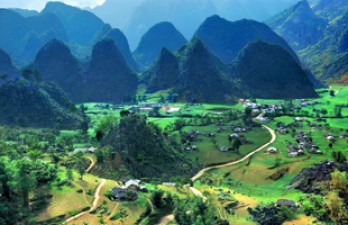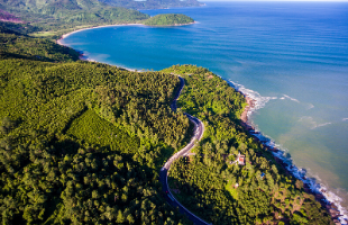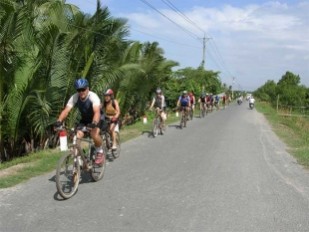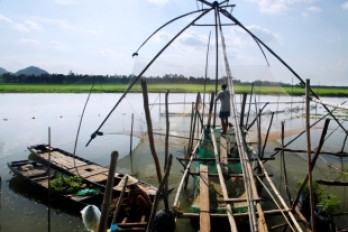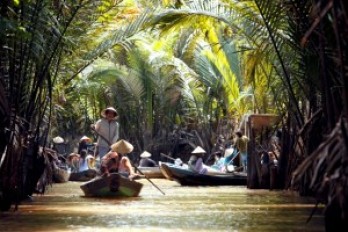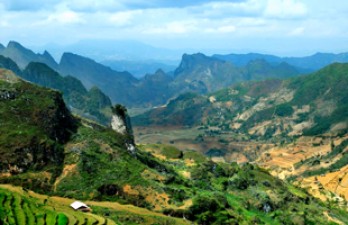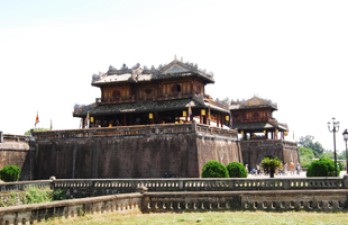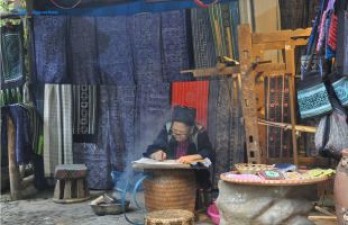Creating lasting and meaningful memories through slow travel in Vietnam - Handspan Travel Indochina
2Slow travel is one of the best ways to escape from the hustle and bustle of daily life. Instead of trying to visit as many places as possible, visitors may want to slow down the pace and truly appreciate a destination. Slow travel in Vietnam allows you to create lasting memories, forge meaningful connections, and have a more enriching and authentic experience of the country's culture, nature, and people. Let’s find more detailed information on some aspects of slow travel in Vietnam with Handspan Travel Indochina!
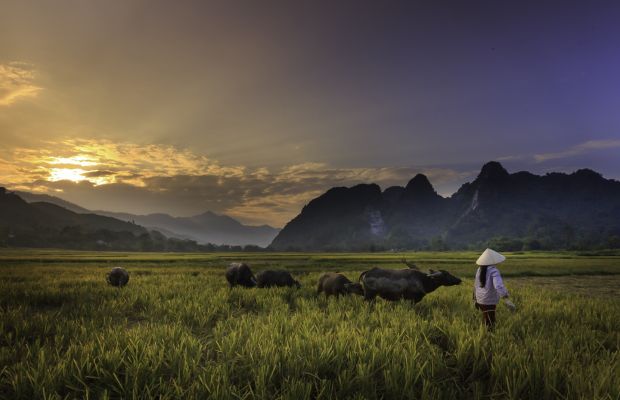
Slow travel in Vietnam
Through this article, you will know the pieces of information below.
General information about slow travel
Slow travel is a style of travel in which tourists have a chance to learn, feel, and connect more with the language, people, culture, and cuisine of a destination. It often involves learning about and respecting local cultures, engaging in sustainable activities, and appreciating the surrounding nature and environment. It creates a more meaningful travel experience, allowing travelers to embrace a slower and more relaxed pace, integrate into local life, and foster meaningful connections with the community.
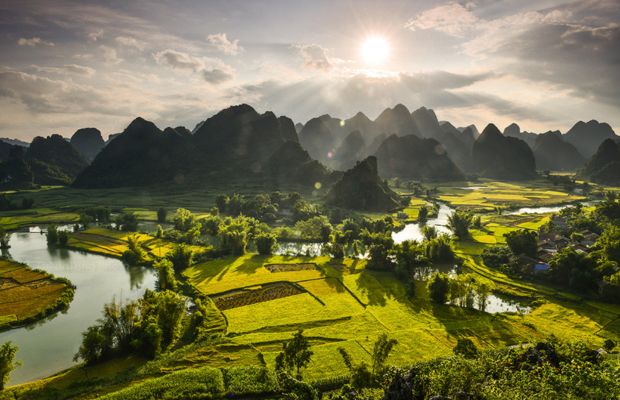
Slow travel allows you to immerse in nature
Nowadays, more tourists choose slow travel because of its benefits. It is really a chance to have deeper cultural immersion and authentic experiences and encourage self-reflection, personal growth, and a deeper appreciation for the world around us. Besides, slow travel also offers a range of benefits for the destination travelers come to, like reducing environmental impacts and supporting local economies.
For more information, you can refer to our blog post: Slow travel - the future of travel is present at Handspan Travel Indochina since 1997. Slow travel in Vietnam is currently becoming a trend. Let’s keep reading to know more aspects of this trend in Vietnam.
Exploring off-the-beaten-path destinations
Exploring off-the-beaten-path destinations is undoubtedly an indispensable part of slow travel in Vietnam. Instead of focusing solely on spots crowded with tourists, why don’t you venture into lesser-known regions and rural areas? Let’s have a glimpse into traditional Vietnamese life and explore offbeat corners at these outstanding destinations below.
Hanoi
Traveling to Hanoi, besides famous spots crowded with tourists, you can also visit local markets in which you will see various stalls selling different types of goods, how local people buy and sell these goods, and other less popular places to deeper immerse in the locals’ life.

Hoan Kiem Lake, Hanoi
Get on a Jeep car to see the local pace of life on the vibrant streets of Hanoi, then get off the car to hop on a motorbike taking you to Banana Island. Life here is totally different from other places in Hanoi’s life. You will no longer see high buildings and smoke from vehicles. Instead, a whole green banana field appears in your eyes. Every tree is tall with leaves spreading out.
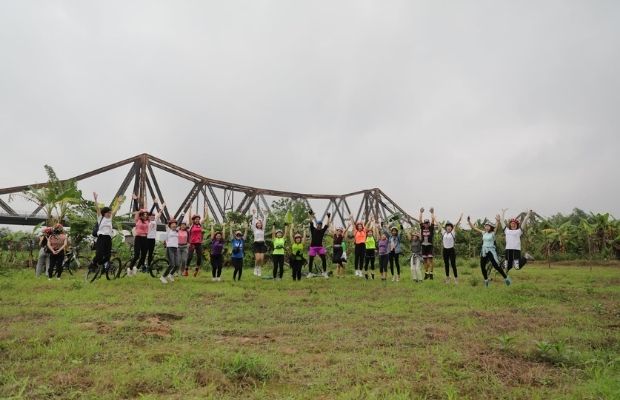
Cycling around Banana Island

Sunset in the Banana Island
Besides, you can refer to our tour package to Hanoi’s countryside areas below.
The quaint ride from Ba Vi to Duong Lam
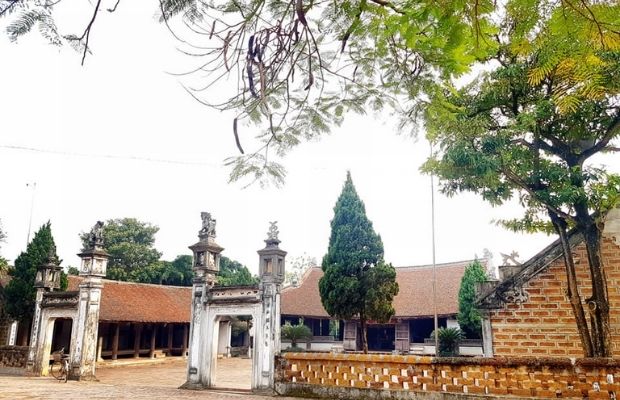
Duong Lam Village
Bai Tu Long Bay
Your slow travel in Vietnam journey may be more memorable with the visit to Bai Tu Long Bay. Compared to Ha Long Bay, Bai Tu Long Bay is more tranquil and undisturbed as the number of boats and cruises here are more limited. Occupying ¾ the total area of the Tonkin Gulf, the bay owns around 3000 islets. The islands in Bai Tu Long are mainly in the form of limestone islands with a geological tectonic age of about 300 million years.
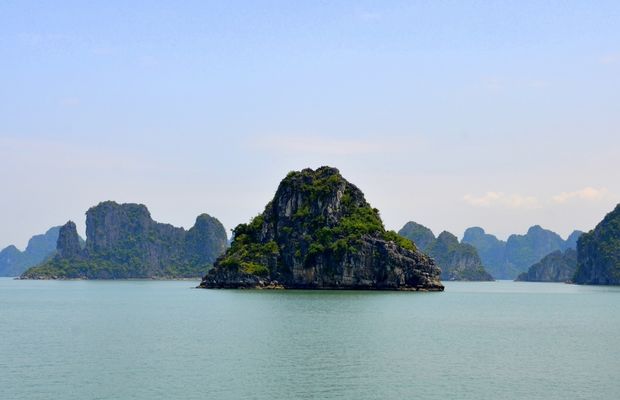
Bai Tu Long Bay
Taking an overnight cruise is the best way to explore the splendid nature of Bai Tu Long Bay. Besides adoring the bay’s landscape, you will also have the chance to do kayaking, join a cooking class, do Taichi on the deck, etc. You can refer to our tour package here for a complete experience: Halong Bay Cruise on Treasure Junk (1 night). We will take you through an exceptional route far away from mass tourism sites, and you can sail among thousands of majestic limestone rocks.

Treasure Junk on Bai Tu Long Bay

Kayaking on Bai Tu Long Bay

Fishing village in Bai Tu Long Bay
Ha Giang
Ha Giang is also an ideal offbeat destination for your slow travel in Vietnam’s journey. With a total area of nearly 8,000 square kilometers, Ha Giang is famous for its stunning landscapes of mountains, rivers, forests, and terraced rice fields. Thanks to these natural conditions, this destination is exceptionally ideal for trekking, rock climbing, and scenic driving.
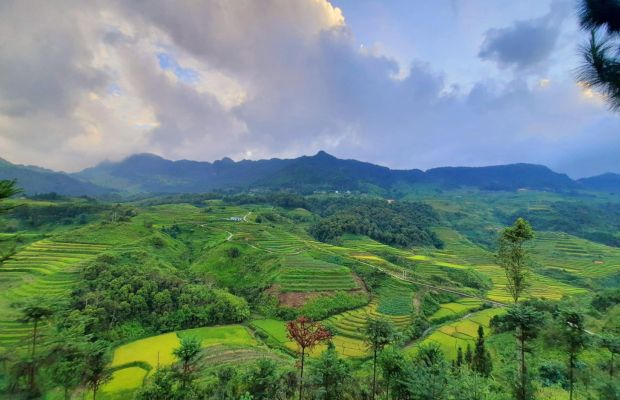
Nam Dam Village, Ha Giang
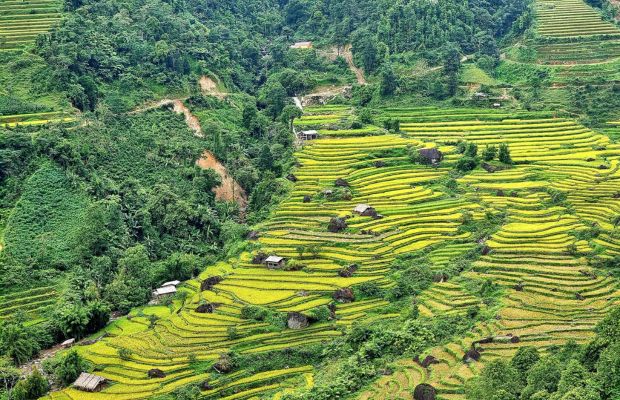
Terrace rice fields in Ban Luoc, Ha Giang
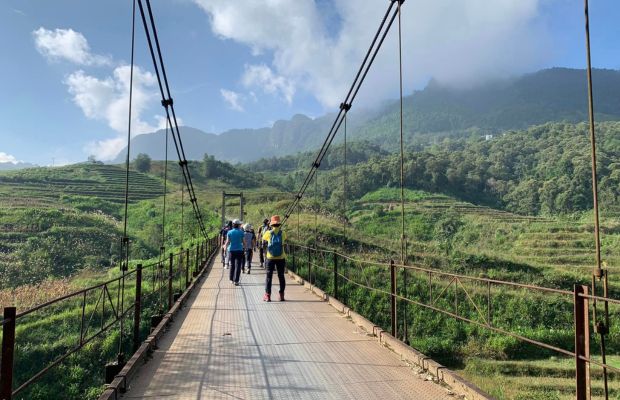
Trekking in Nam Dam Village, Ha Giang
Besides natural beauty and adventurous activities, Ha Giang is also well-known for its rich cultural and ethnic identities. It is home to diverse ethnic groups, including the Dao, Hmong, and Tay, with their own unique customs and traditions. Let’s immerse yourself in the pristine natural landscape and enjoy the peaceful atmosphere here.
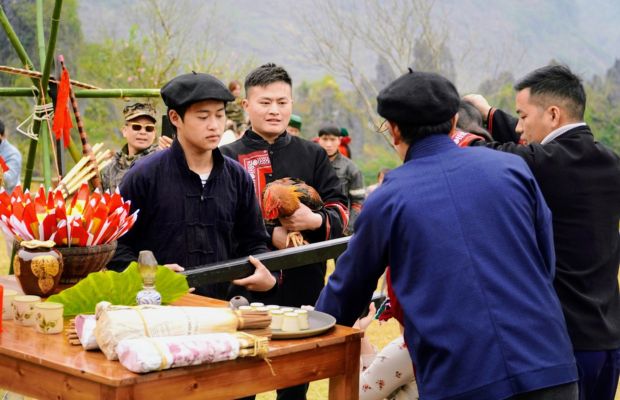
Gau Tao Festival in Ha Giang
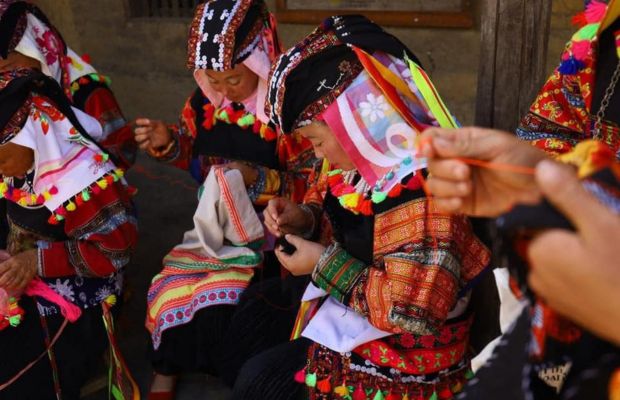
Embroidery in Lo Lo Chai Village, Ha Giang
Refer to our Ha Giang tour packages below.
Terrace Beauty: Exploring Hoang Su Phi and Sapa
Epic Expedition Ha Giang to Ba Be
Embracing local customs and traditions
Slow travel in Vietnam involves engaging with locals, learning about their customs, and participating in cultural activities. This can include attending festivals, trying traditional crafts or cooking classes, and staying with local families. Visiting Vietnam, you may want to experience these things below.
Joining a cooking class in Hanoi
Hanoi is a famous spot to join a cooking class in Vietnam. In Hanoi, Chef Ai’s cooking class is an impressive cooking class that Handspan highly recommends. For us, Chef Ai is not only a partner but also a friend who will bring you a local experience. Chef Ai is a passionate chef in Hanoi with more than 15 years of experience. Since 2015, she has been cooperating with Vietnam’s travel agencies as a local chef sharing about Hanoi street foods and teaching how to cook traditional Vietnamese dishes.
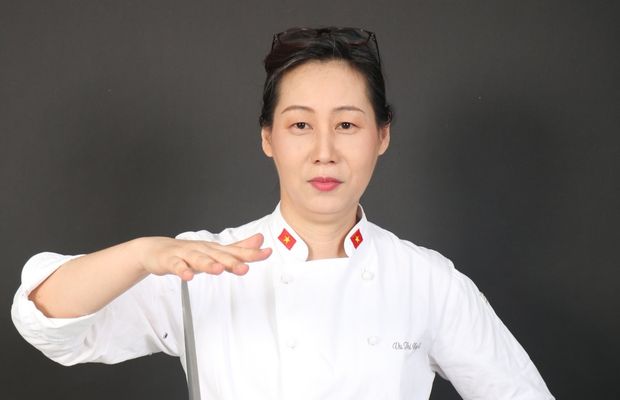
Chef Ai
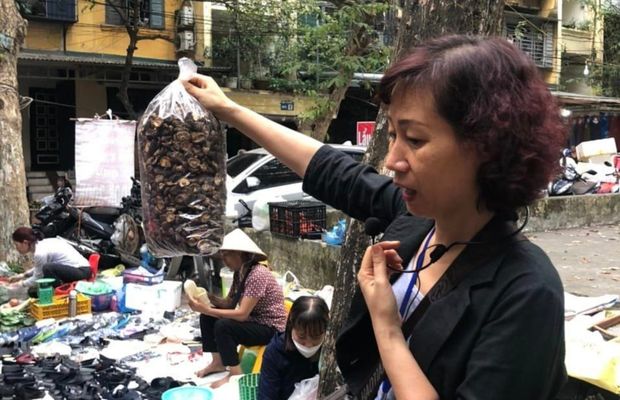
Chef Ai introduces local ingredients
For more detailed information about Chef Ai and her cooking class, please refer to our blog post here: Meet with Chef Ai - a passionate and professional chef in Hanoi with Handspan Travel Indochina.
Visiting a local house in Sapa
Sapa is undoubtedly an ideal place to escape from the hustle and bustle and immerse yourself in nature. Your journey to explore this destination will be more memorable thanks to Sung, an experienced local tour guide in Sapa.
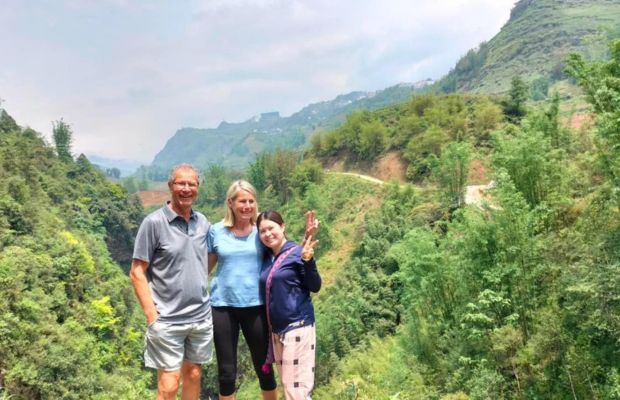
Exploring Sapa with Sung
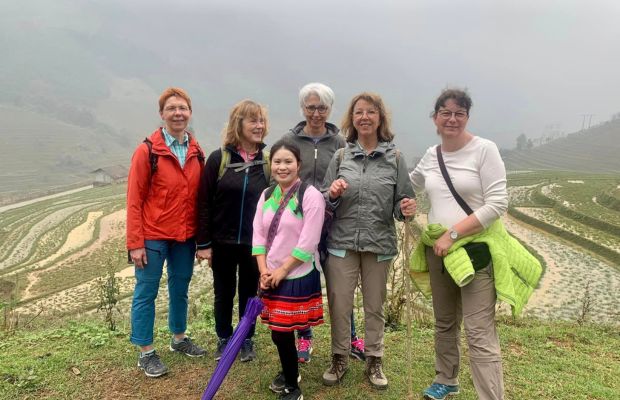
Exploring Sapa with Sung
Visiting Sung’s house, you will have a chance to learn about the local culture, and how they live in a house with three generations, try local specialties, and join some steps in Batik drawing: heating beeswax, drawing vibrant patterns on a small fabric using melted beeswax, etc. Let’s travel to Sapa and don’t miss out on the opportunity to meet Sung with us! Just decelerate your pace and enjoy slow travel in Vietnam.
Joining festival activities
Joining festival activities is one of the best ways to get acquainted with Vietnamese culture. Festivals are held all over the country, reflecting the customs and practices of each region.
Tet Nguyen Dan (Lunar New Year) is one of the biggest festivals in Vietnam. This festival is calculated according to the lunar calendar, often lasting two weeks from December 23. Kitchen God Day, New Year's Eve, three first days of the New Year are some crucial timelines. During this time, Vietnamese people have typical Tet customs showing the beauty of Vietnamese culture. Don’t miss walking along the vibrant streets and enjoying the bustling atmosphere if you are in Vietnam at this time.
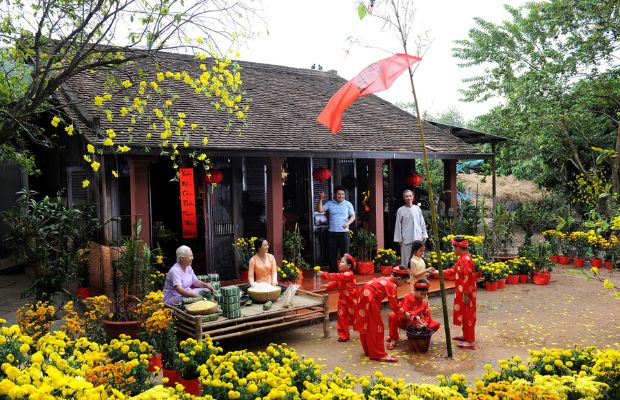
Tet Holiday in Vietnam
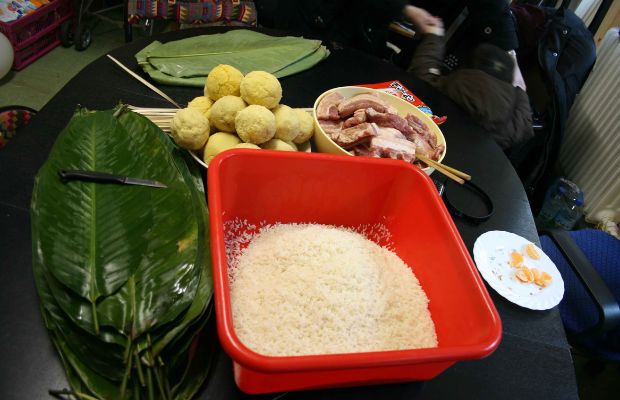
Making Chung Cake for Tet Holiday in Vietnam
Besides Tet, there are many other important festivals in Vietnam, such as the Hung King Temple Festival, Perfume Pagoda Festival, Mid Autumn Festival, etc. Read our blog post here for more festivals in Vietnam: The top 05 best festivals in Vietnam you should not miss.
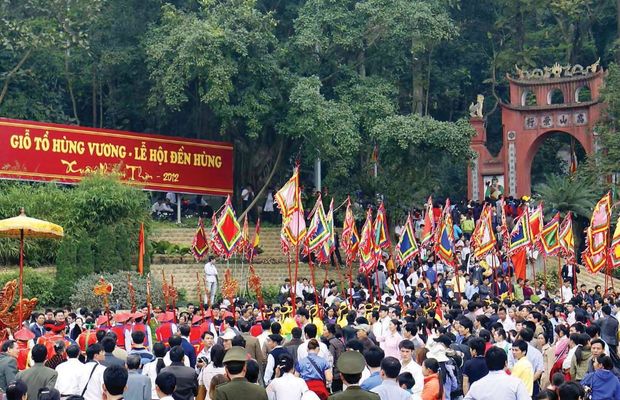
Hung King Temple Festival
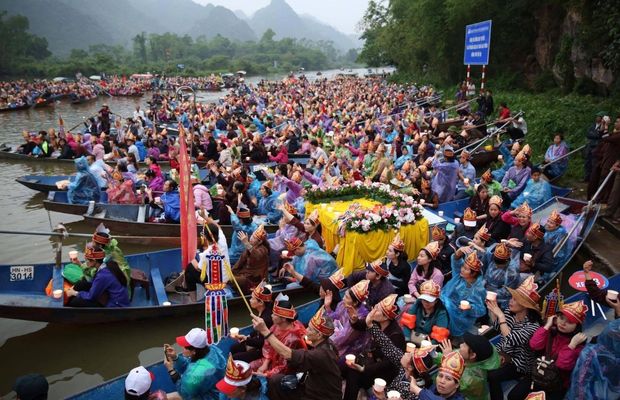
Huong Pagoda Festival
Visiting local markets
Visiting local markets is also an aspect of slow travel in Vietnam. These markets offer a fascinating array of fresh produce, handicrafts, and traditional products. Engage in friendly conversations with vendors, sample local snacks, and immerse yourself in the authentic Vietnamese market experience. No matter where you are in Vietnam, you can easily catch up with local markets. In large cities like Hanoi and Saigon, you may find crowded markets, such as Dong Xuan Market, Hang Da Market, and Hom Market in Hanoi, and Ben Thanh Market, Binh Tay Market, and An Dong Market in Saigon. Visiting these markets, you will see different items of goods, from daily food, and fruits to fabrics, souvenirs, clothes, etc.
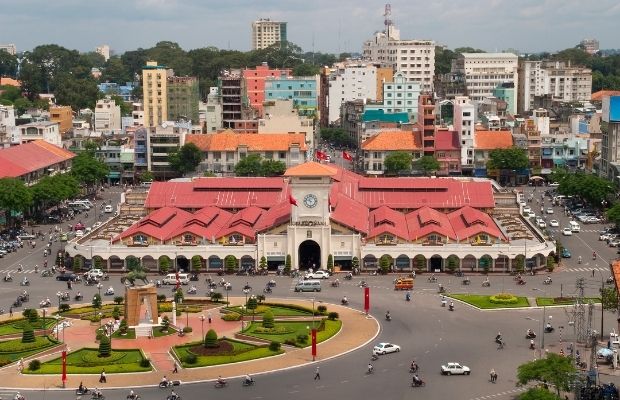
Ben Thanh Market
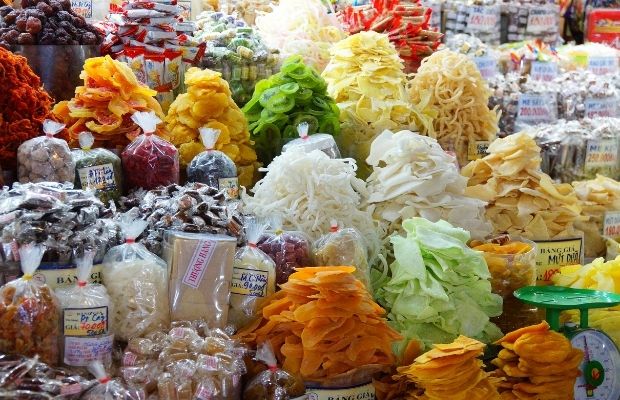
A dry food stall in the Ben Thanh Market
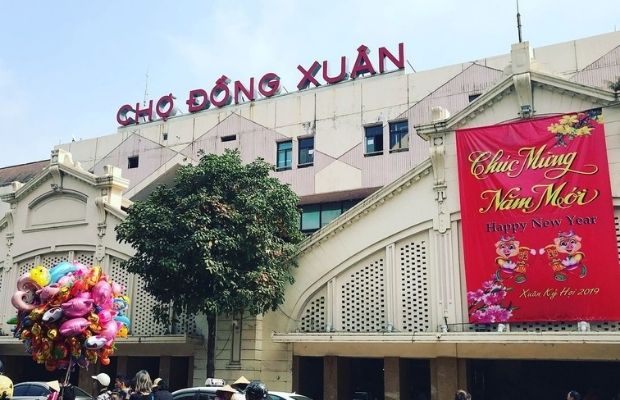
Dong Xuan Market
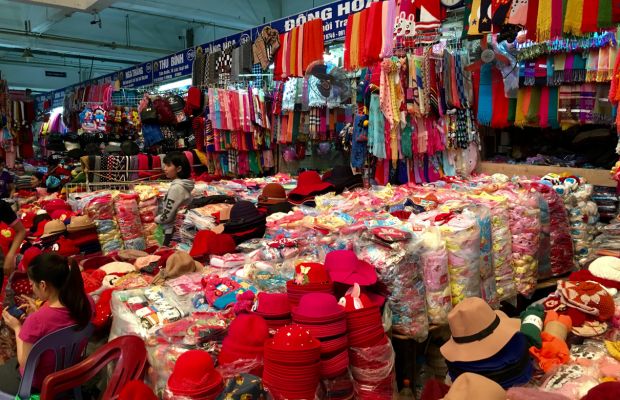
Clothes stalls in Dong Xuan Market
Whereas in the mountainous areas of Vietnam, the markets are smaller but still vibrant. These markets are often held weekly, attracting local people from surrounding areas coming to exchange goods, and tourists coming to visit. Bac Ha is one of the destinations in the North of Vietnam famous for markets imbued with local identities. Bac Ha Fair, Coc Ly Fair, and Lung Phinh Fair are some featured names. You can refer to our blog post here for more detailed information: Exploring three famous markets in Bac Ha with Handspan Travel Indochina.
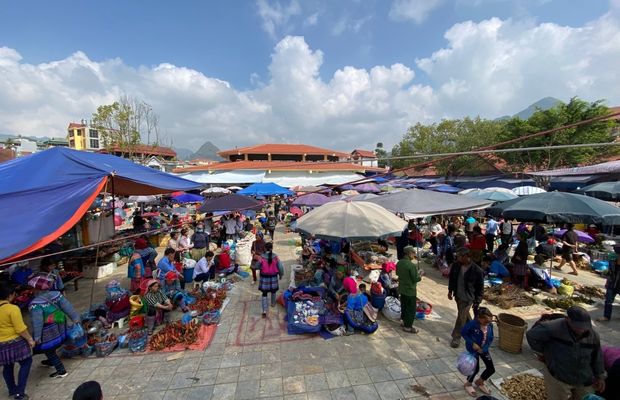
Bac Ha Fair
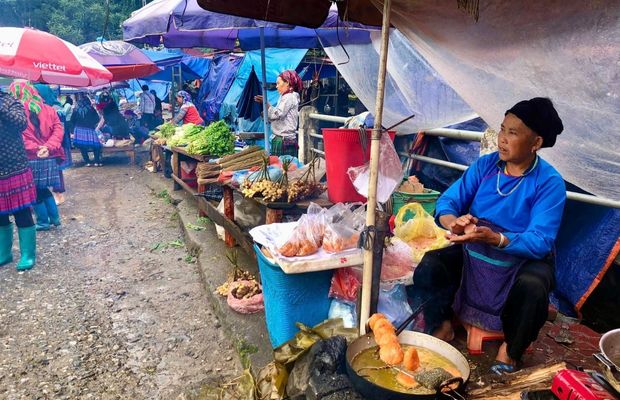
Lung Phinh Fair
Especially, if you travel to the Southwest region of Vietnam, you will find floating markets, which is a unique cultural characteristic here. Cai Rang floating market, Phong Dien floating market in Can Tho, Tra On the floating market in Vinh Long, and Long Xuyen floating market in An Giang are some of the floating markets you may not want to miss.
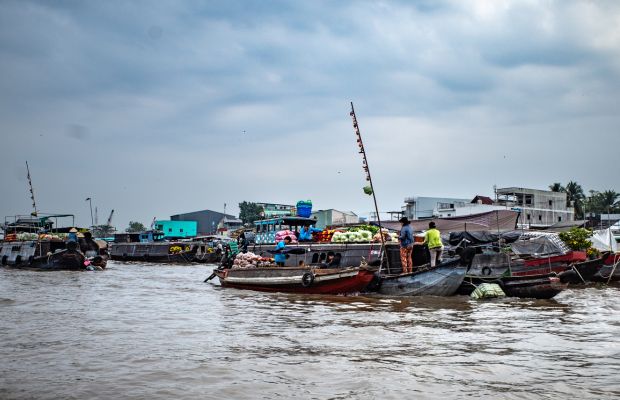
Cai Rang floating market
Exploring historical sites and ancient town
Undoubtedly, exploring historical sites and ancient towns is a part of slow travel in Vietnam. Hoi An is among the ideal destinations to wander through ancient streets, and admire well-preserved architecture. Located in Quang Nam Province, Central Vietnam, Hoi An town with its peace and ancient has become one of the most popular tourist attractions that appeal to travelers of all tastes and across the continents. In 1999, Hoi An was recognized by UNESCO as a World Heritage Site.
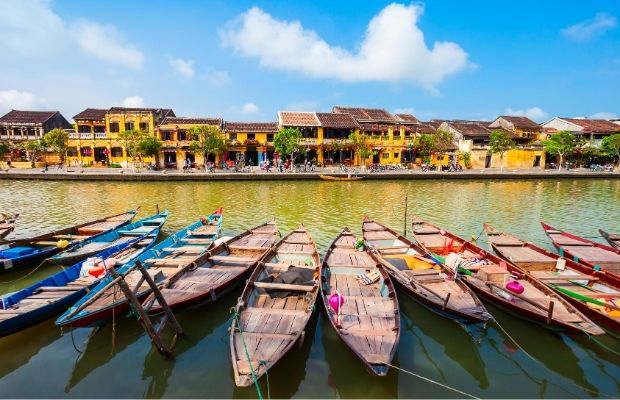
Hoi An Ancient Town
Hoi An's architecture is harmoniously mixed with Vietnamese, Chinese, and Japanese designs. It is a mass of many pagodas, temples, and ancient houses that carry its unique mark, making it distinctive and unlike any other sites throughout Vietnam. Pagoda Bridge (Chua Cau), Fujian Assembly Hall, and Hoi An Museum of History and Culture are some places you may want to visit in Hoi An. For more information about Hoi An, please refer to our article: Hoi An: Everything you need to know before your trip.
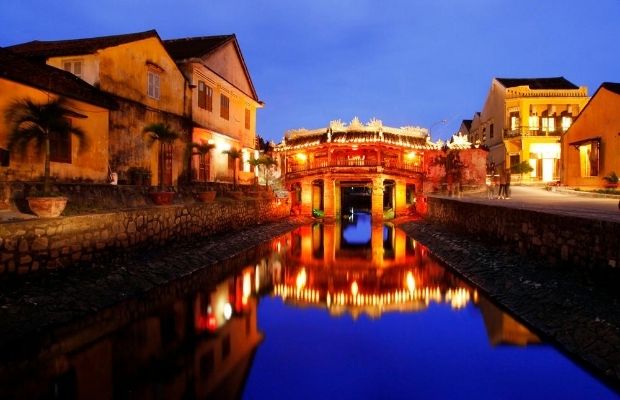
Japanese Bridge Hoi An
Fujian Assembly Hall
Like Hoi An, Hue is also a suitable choice for slow travel in Vietnam and a glimpse into Vietnam's storied past. The ancient capital is home to many temples, pagodas, tombs, and palaces with impressive architectural styles.
There’s a mistake if you don’t mention the Imperial City which is the walled citadel and royal palaces when traveling to Hue. The Imperial City served as a venue for significant court ceremonies, forebear worship, and the royal family’s residence.
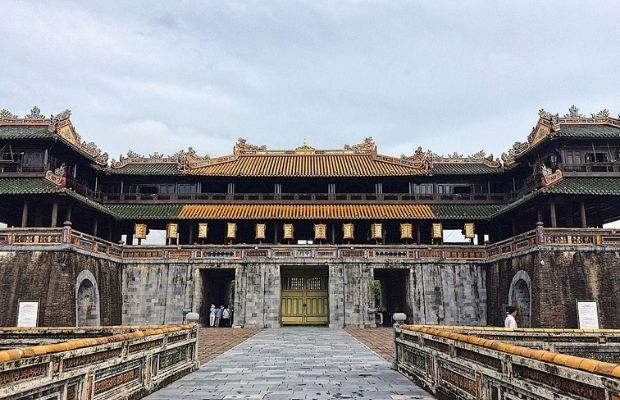
Hue Imperial City
Additionally, the tombs where the Emperors’ mummies under the Nguyen Dynasty were stored now are open for sightseeing. Therefore, these tombs have magnificent architectural designs that make a deep impression on tourists’ minds. Amongst seven royal tombs, Minh Mang, Tu Duc, and Khai Dinh tombs are famous tombs. Moreover, another destination recommended for tourists is Thien Mu Pagoda - the oldest and the most magnificent religious monument in Hue. Let’s refer to our Hue one-day tour for a complete experience here: Hue Cultural Heritage. Besides, you can also read our Hue travel guide here for more detailed information about Hue: Everything you need to know before you go to Hue.
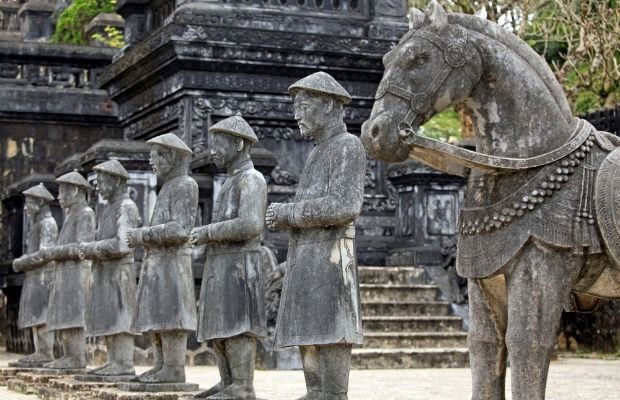
Tu Duc Tomb
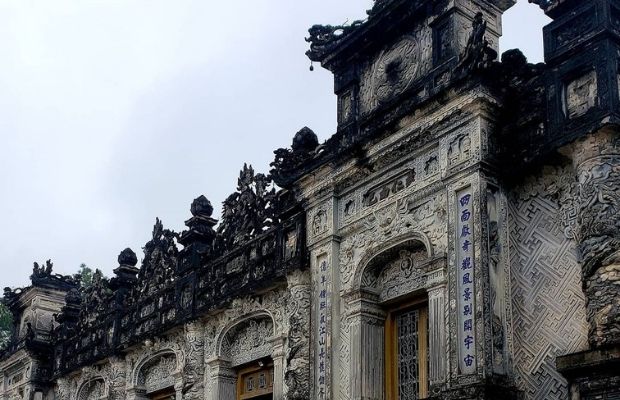
Khai Dinh Tomb
Besides Hue and Hoi An, there are many historical sites throughout the country. Let’s travel to Vietnam and explore these sites yourself!
Taking part in meditation and wellness retreats
Taking part in meditation and wellness retreats is an indispensable part of slow travel in Vietnam. With rich plant and herbal resources and alluring natural landscapes, from mountains, and caves to beaches, Vietnam is indeed a suitable destination to take a wellness retreat vacation. Activities in a wellness retreat vacation combine the use of all senses. You will hear the sound and music, see the space and scenery, touch, and do exercise. Besides, you can smell fragrances and taste delicious food. Some amazing experiences include yoga, taichi & meditation, holistic energy and healthcare, art & music therapies, and physical activities. All of these activities help you relieve stress, immerse in nature, and slow down your pace of life.
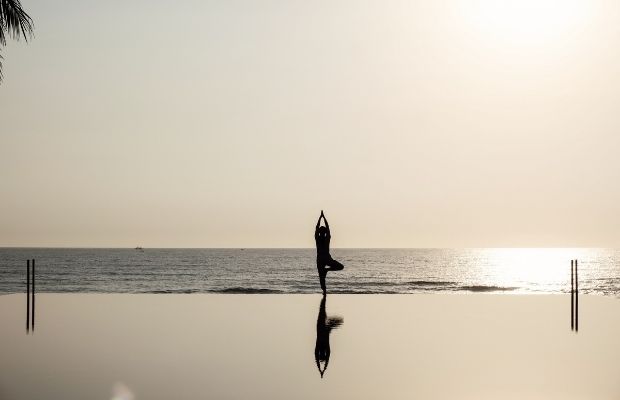
Wellness retreat vacation in Vietnam
Traveling along Vietnam, you can find many gorgeous wellness retreat resorts meeting up to wellness needs. Below are some amazing wellness retreat resorts you can refer to.
Topas Ecolodge and Topas Riverside Lodge
Located in the remote area of Sapa with fresh air and atmosphere, Topas Ecolodge and Topas Riverside Lodge are indeed suitable for a wellness retreat vacation. Staying in these two resorts, you can immerse yourself in the featured cultural space and magnificent nature in Vietnam’s Northwest areas.
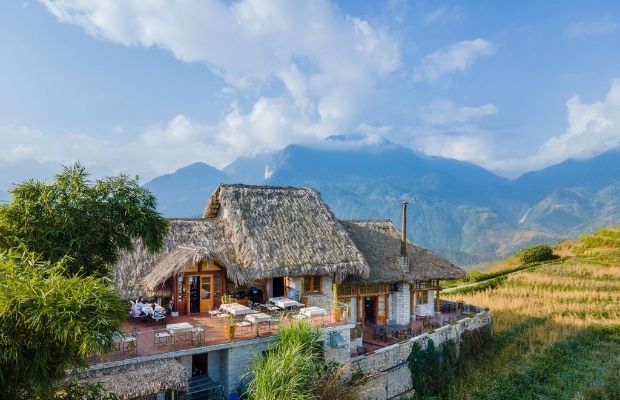
Topas Ecolodge
Joining the Topas wellness retreat package, you will have a chance to walk around the village and visit the Red Dao’s house, relax by the cool stream, join the Vinyasa yoga retreat, enjoy vegan and other types of food, etc.
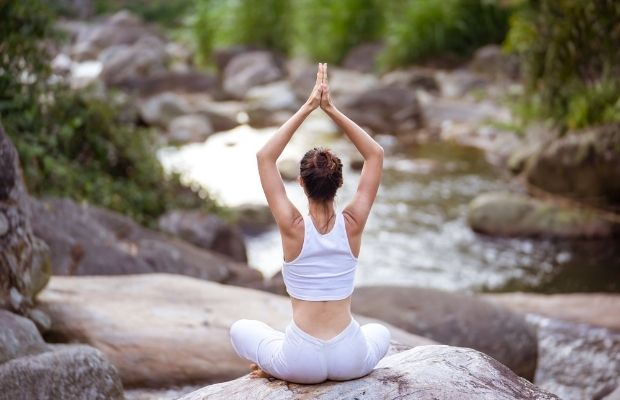
Doing Yoga in Nam Cang
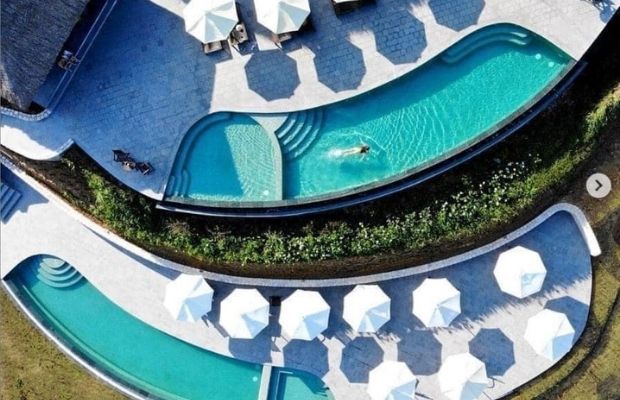
Infinity pool in Topas Ecolodge
Alba Wellness Valley Hue
Alba Wellness Valley is also one of the wellness retreat resorts you should not miss. It is located at the foot of the Truong Son mountain range, among a spacious space of mountains, valleys, and streams.
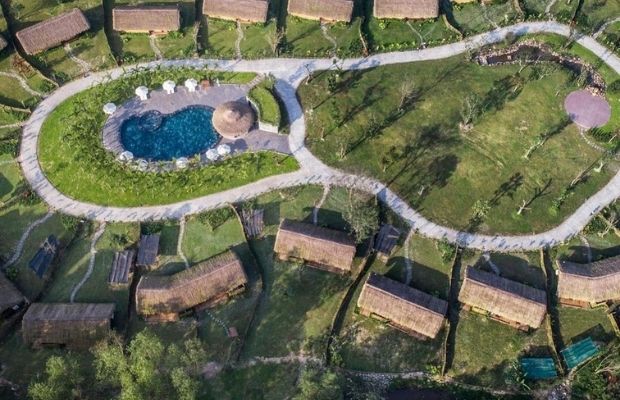
Alba Wellness Valley Hue
Staying here, you will have an opportunity to learn about local culture, relax and regenerate energy. Besides, you can balance your spiritual life, relax, and maintain good health through various activities, such as yoga, Tai Chi, walking and water meditation, spa therapies, food experiences, etc.
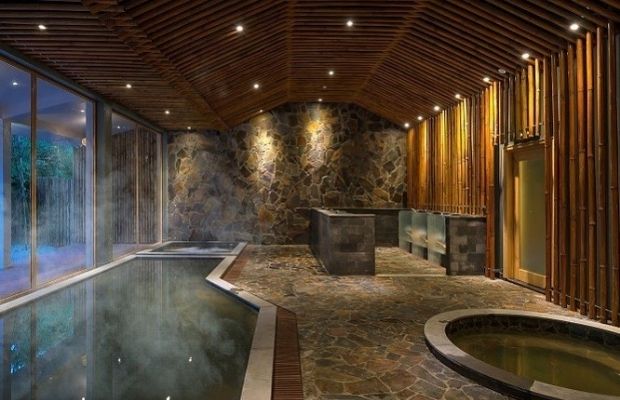
Onsen bathing at Alba Wellness Valley Hue
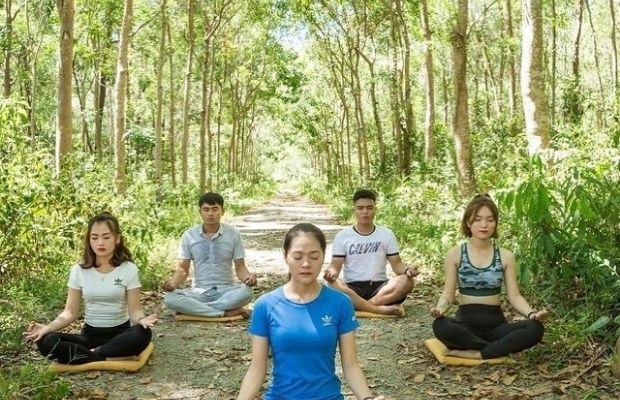
Doing meditation at Alba Wellness Valley Hue
TIA Wellness Resort Da Nang
TIA is also one of the wellness retreat resorts in Vietnam you may not want to miss. Thanks to the stunning beachfront location, fully-equipped facilities, and impressive packages offered, TIA Wellness Resort is indeed an ideal choice for a wellness vacation.
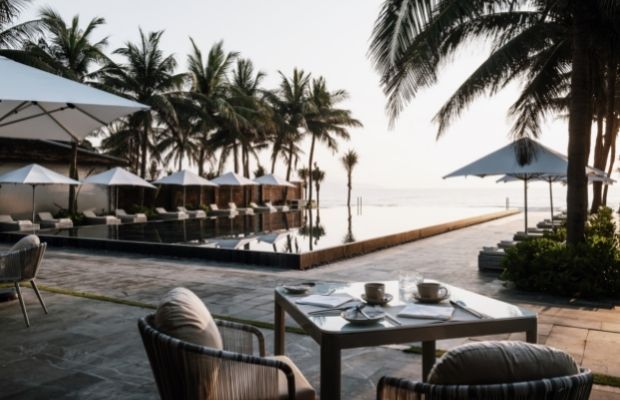
TIA Wellness Resort
Staying in TIA Wellness Resort, you will have a chance to enjoy spa treatments, join a creative workshop with TIA tea, a breathwork master class, taichi, yoga, etc.
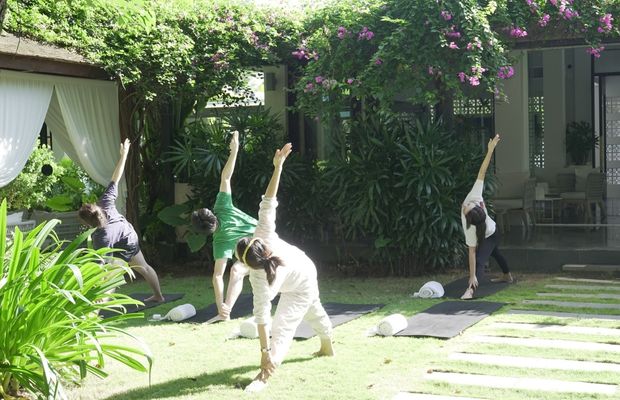
Vinyasa yoga at TIA Wellness Resort
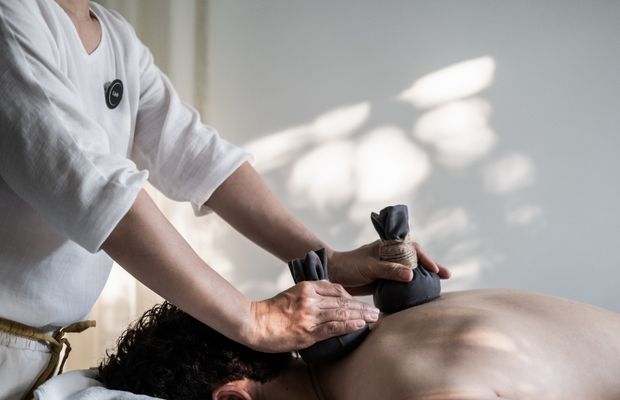
Spa treatment at TIA Wellness Resort
For more wellness retreat resorts in Vietnam, please refer to our blog post here: The top 08 amazing wellness retreat resorts in Vietnam.
Food experiences
Vietnam is renowned for its diverse and delicious cuisine from the North to the South. Slow travel in Vietnam allows you to savor the flavors of Vietnamese food. Explore street food stalls, sample regional specialties, and learn about the culinary traditions and techniques passed down through generations. Here are some of the notable specialties you can find in Vietnam.
Banh mi (Vietnamese baguette)
Originating from France; however, Banh mi (Vietnamese baguette) has become a well-known specialty in Vietnam. Over time, besides cheese, and butter, the fillings inside banh mi are more varied in different regions. It typically includes a crusty baguette, sliced meats (such as grilled pork or pâté), fresh vegetables, herbs, and a tangy sauce. Though Banh mi can be easily found at street vendors throughout Vietnam, this food is highly recommended in Hanoi, Hai Phong, Hue, Hoi An, and Ho Chi Minh City. Let’s see how banh mi Vietnam is in different regions here.
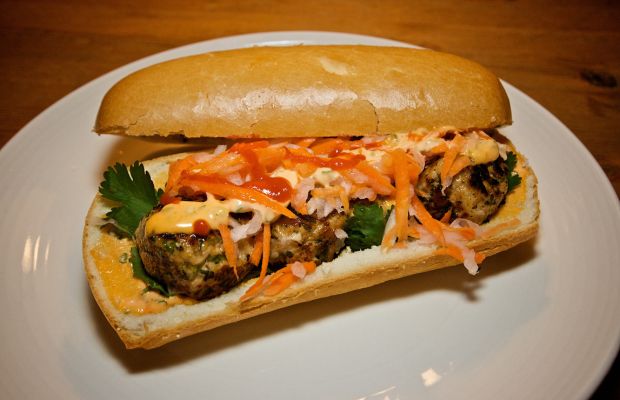
Banh mi Vietnam
Pho (Vietnamese noodle)
Pho is a staple of Vietnamese cuisine and is widely enjoyed as a breakfast or lunch dish. This iconic Vietnamese dish consists of a flavorful broth, rice noodles, and various toppings such as beef or chicken, fresh herbs, bean sprouts, and lime.
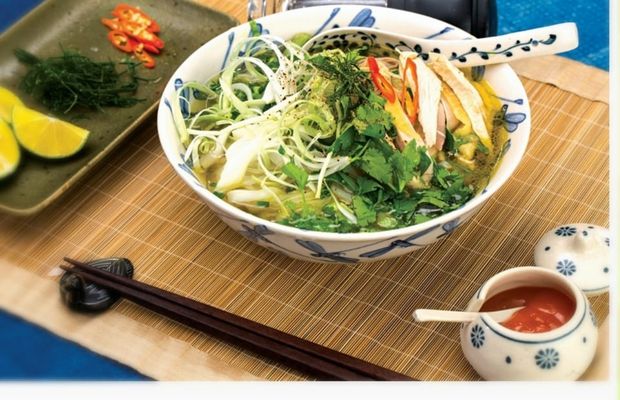
Vietnamese noodle
Banh xeo (Vietnamese-style pancake)
Banh xeo is a crispy Vietnamese pancake made from rice flour, coconut milk, and turmeric. The dish is filled with a combination of shrimp, pork, bean sprouts, and herbs. It is typically eaten by wrapping it in lettuce leaves and dipping it in a savory sauce.
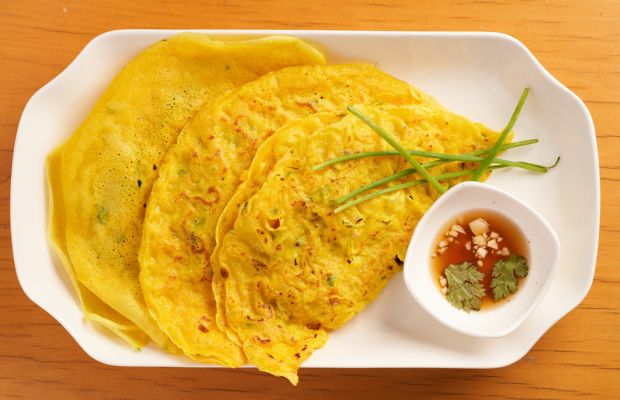
Banh Xeo
Banh Cuon (Steamed rice rolls)
These delicately steamed rice rolls are filled with a savory mixture of ground pork, mushrooms, and shallots. They are often served with fried shallots, fresh herbs, and a side of dipping sauce.
Besides these above dishes, Vietnam also has various cuisines throughout the country. Each region has its own unique specialties with featured flavors. So, don’t miss out on your culinary adventure in Vietnam.
Overall, by embracing slow travel in Vietnam, you can create meaningful and sustainable experiences. Let’s take the time to truly immerse yourself in the beauty and authenticity of Vietnam!
__logo.png)
__hanoi-water-puppets.jpg)
__angkor-wat-blue-reflections.jpg)
__vientiane-buddha-park-monks.jpg)
__bagan-dhammayazika-dusk.jpg)
